© ROOT-NATION.com - Use of content is permitted with a backlink.
When companies update models without radical changes, users always complain. Patch some thing, improve some other thing, add a new catchphrase and sell whatever you want. But all this does not apply to the hero of today’s review. Meet the DJI Mini 2!

DJI Mini 2: What’s new
You have no idea how much the guys from DJI have fixed, added, and changed in the new Minik. Count with me:
- The drone now flies on OcuSync instead of regular Wi-Fi
- Type-C everywhere
- Shoots in 4K, 30 fps with bitrate up to 100 Mbps
- New motors and remote control
- Blades that are more convenient to change
- More practical case
- RAW photos!!!
This is not just a minor update. Today we test the near-perfect consumer drone, although there are a couple of issues. But let’s not get ahead of ourselves.
Fly More Combo variants
For those who are first faced with the choice of a drone and with DJI products, there are only 2 to choose from:
- DJI Mini 2
- DJI Mini 2 Fly More Combo

The first one includes the drone itself, a remote control with three wires for connecting any phone (type-c, microUSB, Lightning), a drone and remote charging cable (USB-A to Type-C), a set of propellers, a screwdriver and screws for replacement of the same propellers, and only one battery. This configuration allows up to 31 minutes of flight time and that’s it.
The second configuration is better:
- Drone
- Remote control with wires
- Three batteries for over 1.5 hours of flight time
- Box for charging all batteries and remote control simultaneously
- Carrying bag
- Drone blade mount
- Power supply
- Charging cable
- Three sets of blades
- Optional detachable remote control joysticks
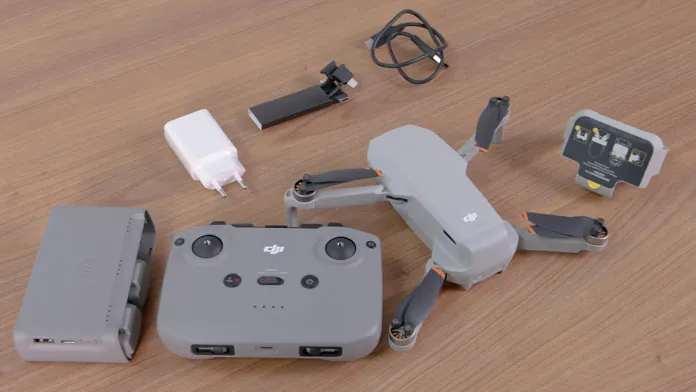
I personally bought myself the first Mini in the second configuration. Believe me, there is no point in saving, it is better to buy the second one.
Yes, the difference is $150, but really, it is worth it. The drone flies for a long time, charges conveniently, there are more spare parts, and believe me, it is pretty easy to brake the blades.
DJI Mini 2 design
Externally, the new Mini 2 does not differ from the old one in almost anything. Only small details indicate that it’s a brand new drone, such as the Mini 2 inscription, an additional LED on the nose, 4K on the protective glass of the camera, Type-C instead of the outdated microUSB and the new form of motors.
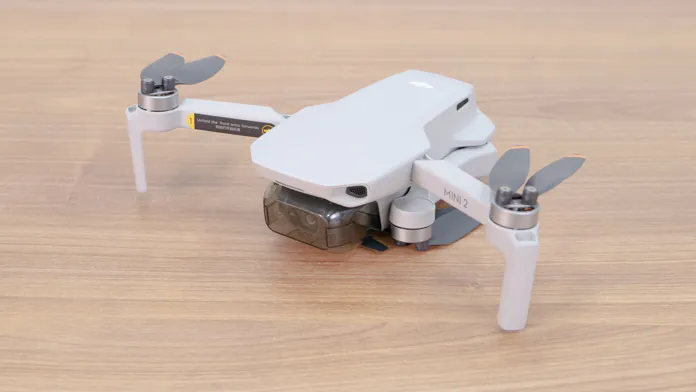
Yes, it’s that simple. But in fact, this restyling affected the speed, and noise, and the quality of shooting, and the way of charging, and even a little bit the duration of the flight.
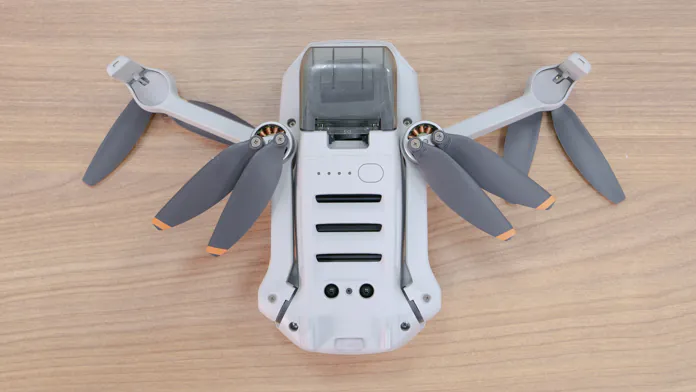
Otherwise, this is the same gray little drone that is able to take a wonderful picture at a great distance without making you worry too much about local laws. Most countries allow a drone to fly if it is less than 250 g. You just carefully put this baby in a small bag and it is ready for the next adventure pretty much anywhere.

The blades were also updated, changing them is now much more convenient. Each has one stripe, while in the previous version there were one or two stripes on the blades. It was very easy to confuse which blade should be in the Mini 1, so it took more time to replace.
Flight characteristics
This is where the things are becoming more interesting, because visually you hold almost the same drone as the previous one, but immediately after take off you understand that this is a new generation device. First of all, it’s faster: the speed is now 16 km/h. 3 km/h faster than before.
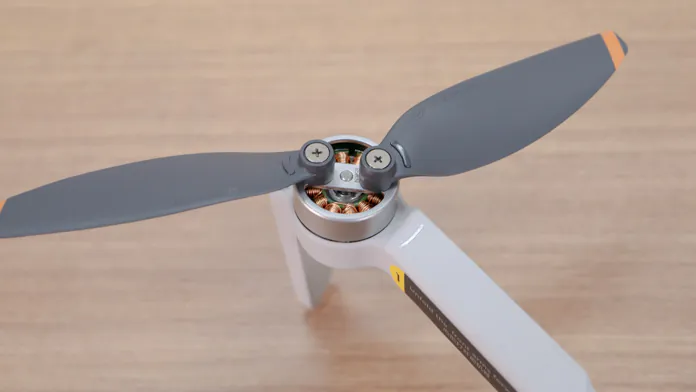
In addition, compared to the Mini 1, the drone has become lighter by 10 g, the weight is in fact 239 with a battery, compated to the declared 242 g. The rate of climb also increased, which is obvious. And the descent is still as gradual as it was before.
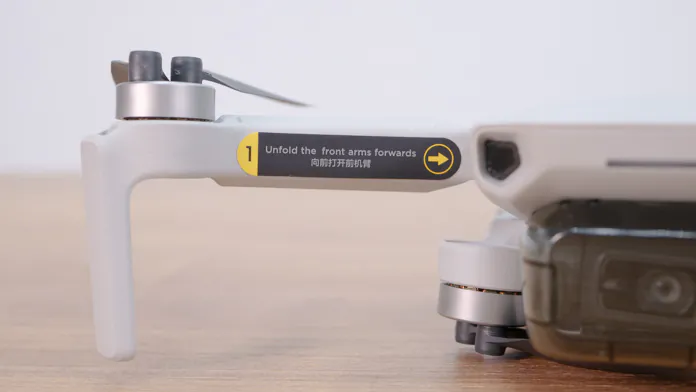
The new engines are slightly more open, which may have allowed for a lighter weight and better cooling. And the drone is quieter, too. It doesn’t cut the air currents, but flies over them.
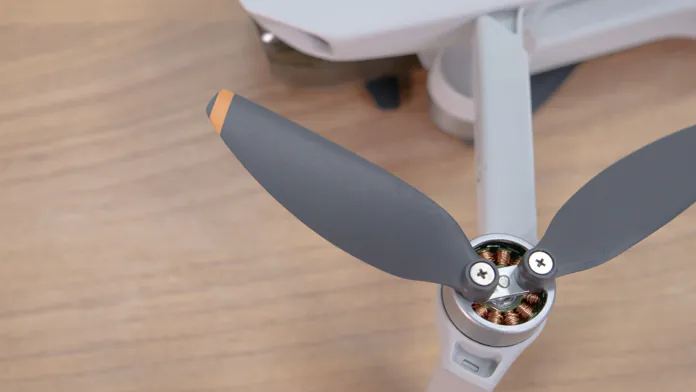
Therefore, now it does not attract attention as it used to, which means it’s more difficult to find it. It’s quieter, too. But the biggest update to this drone is its new remote control.
New controller
Since the Phantom era, DJI used the patented OcuSync technology. It is a very powerful radio transmitter that operates at Wi-Fi frequencies with a more stable signal. The new drone uses the second version of this technology, OcuSync 2.0.
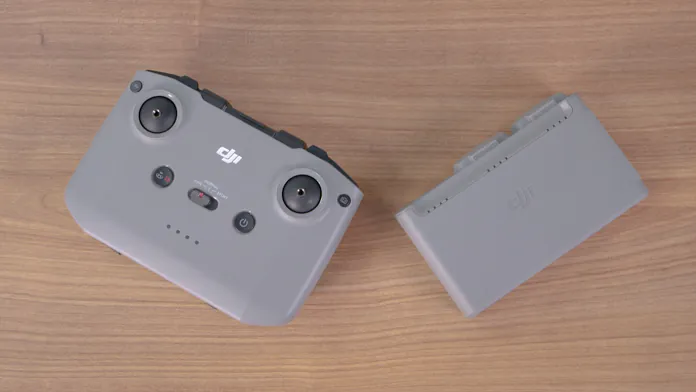
Unlike the first version, it can change the signal dynamically in the frequency range from 2.5 to 5.8 GHz. This reduces the amount of interference, and the communication between devices becomes more stable. The new remote control feel monolithic and sturdy. It is heavier, more comfortable and ergonomic. The remote control alone is worth a separate review, especially since first Mini pretty much sucked in that regard.
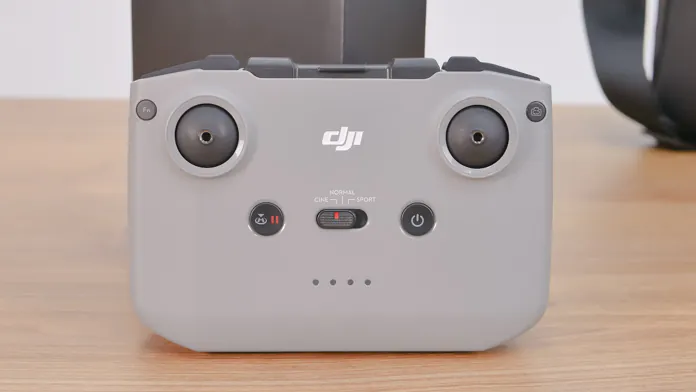
The first thing that immediately catches your eye is that the phone is now mounted on top, and mounting area itself is large enough to fit a 6.7-inch smartphone in a case without any problems.
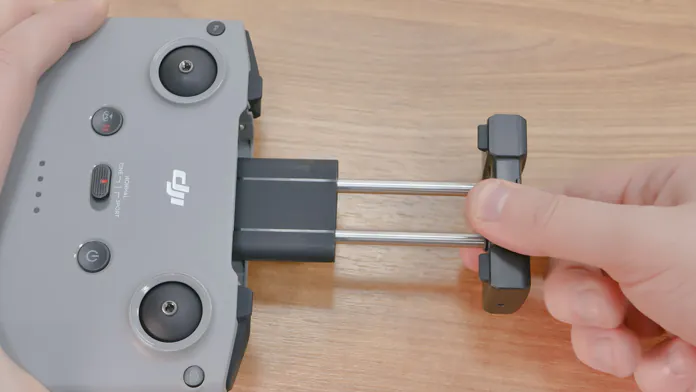
The connection cable is stored under the clamp itself, and this is a great place for it. One jack is for connection and the other is for storing a free connector.
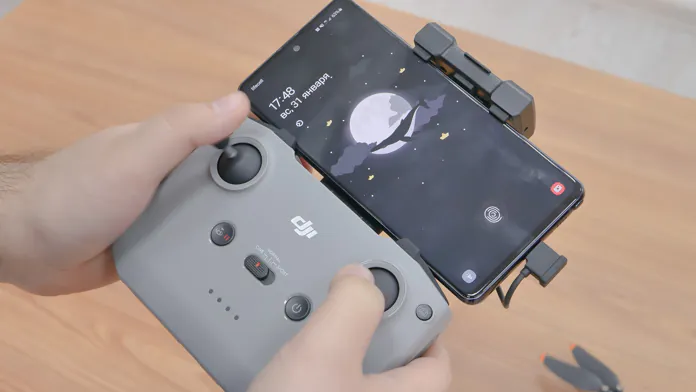
The on and off buttons stopped looking like small pimples. One is for turning on the drone, the second for returning back to the takeoff point. And what I did not expect is how convenient the button for changing the flight modes is (you have cinema, normal, and sport modes). Before the phone was under the joystick and you could easily switch these modes with your left thumb, but having the button is even better.
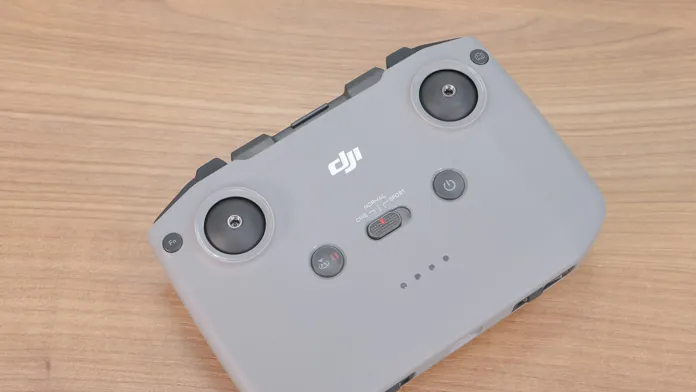
Buttons for recording changed places as well. There used to be two of them. Now there are also two, but with different functions. One changes the photo/video mode, and the other starts the shooting process. Was this division necessary? I don’t think so. But it’s easier than using the phone, because there is also a panorama mode.
At the bottom of the joystick there is a charging port and small rubberized pits for storing joysticks, which traditionally shrink to save space in the bag. Very sharp at first glance compared to the previous version, but you quickly get used to it.
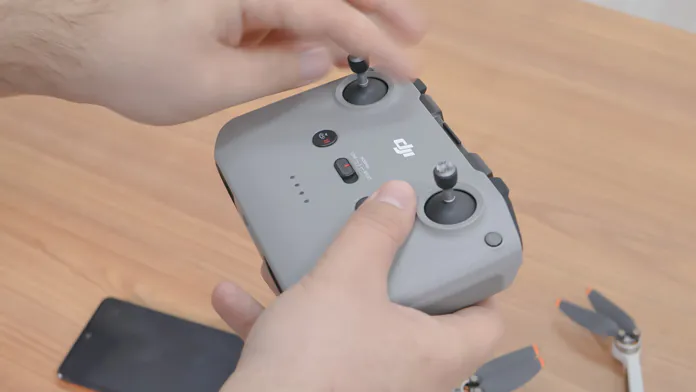
And now to the main test: flight range.
Forget the antennas and the way they are directed towards the drone, forget hiding them or signal amplifiers. Forget about constant interruptions and signal loss in the city. It’s all in the past. The drone just takes off and flies. The picture is radically clearer, and practically no interruptions were observed during the 400 meters of flight. If you think that the previous Mini flew okay, now it’s all two times better.
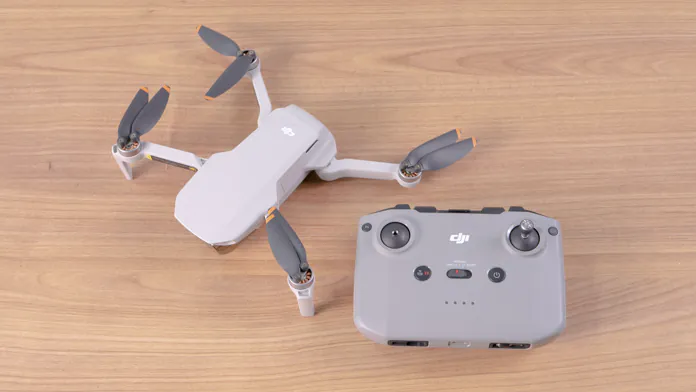
In addition, the flight range has also changed. My record was 1,700 meters with the old model. In the field. The Mini 2 flew a kilometer in the city and did not even notice, since the speed of the drone itself allows me to quickly return it.
Camera and the picture quality
It seems that the progress is small at first glance, but when you compare it, 4K looks so much better. Feels like the gimbal was also improved, which affected the stabilization. Recording is very stable, unlike the previous model.
Video shooting examples:


Now, the numbers. Mini 2: 4K up to 30 fps, bitrate up to 100 Mbps. There are also 25 and 24 frames mode. It is the same in 2.7K resolution, but the bitrate is up to 40 Mbps, which is logical. 1080p allows you to shoot from 24 to 60 frames per second.
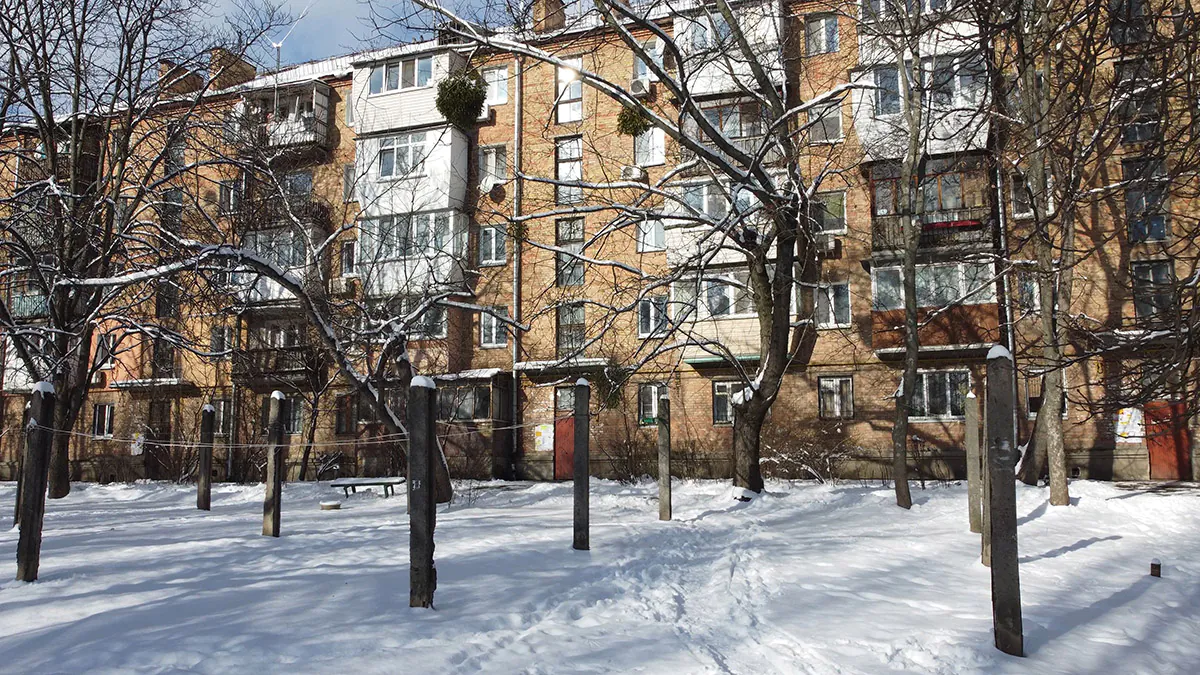
Photo mode now comes with RAW, and this is the most important update overall. The maximum ISO is 3200, and the shutter speed ranges from 1/8000 to 4s. At night, the camera is much worse, but it is still the most affordable solution from DJI.
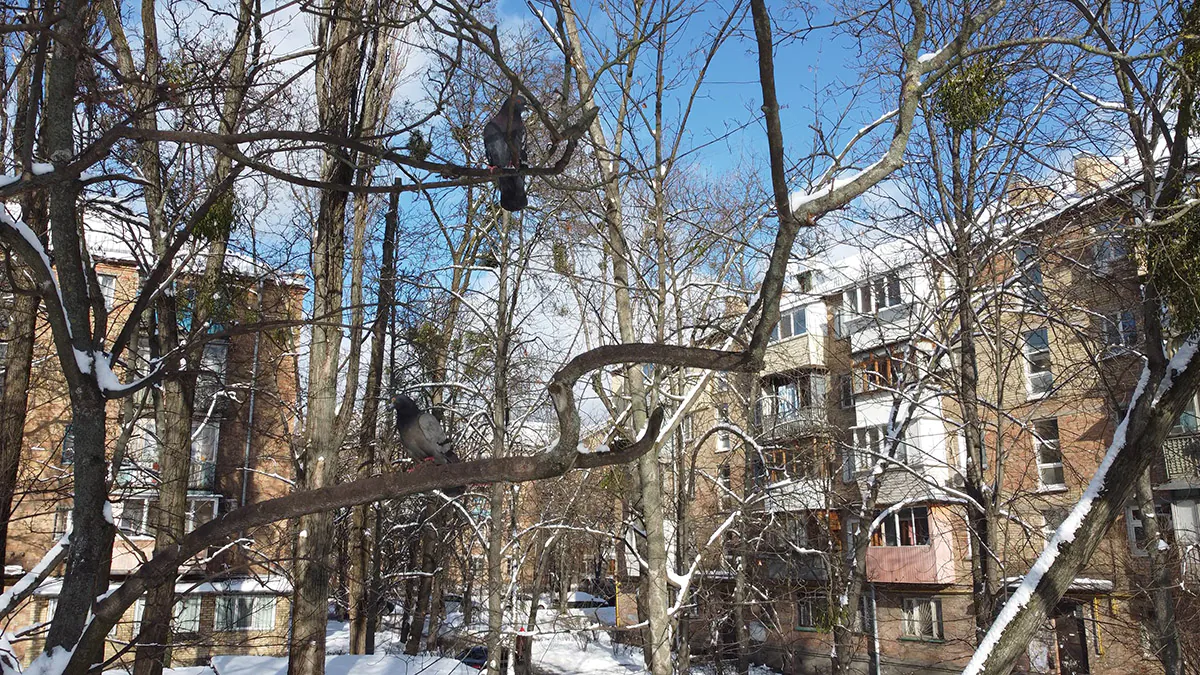
The new panorama mode works wonders and immediately uploads photos to your phone. Now you don’t have to do everything yourself, but, unfortunately, due to the lack of sensors the tracking mode hasn’t appeared yet. It’s a pity. But from experience with the previous model, in a year the SDK will be open to third-party developers (I’m talking about Litchi) and this function will appear.
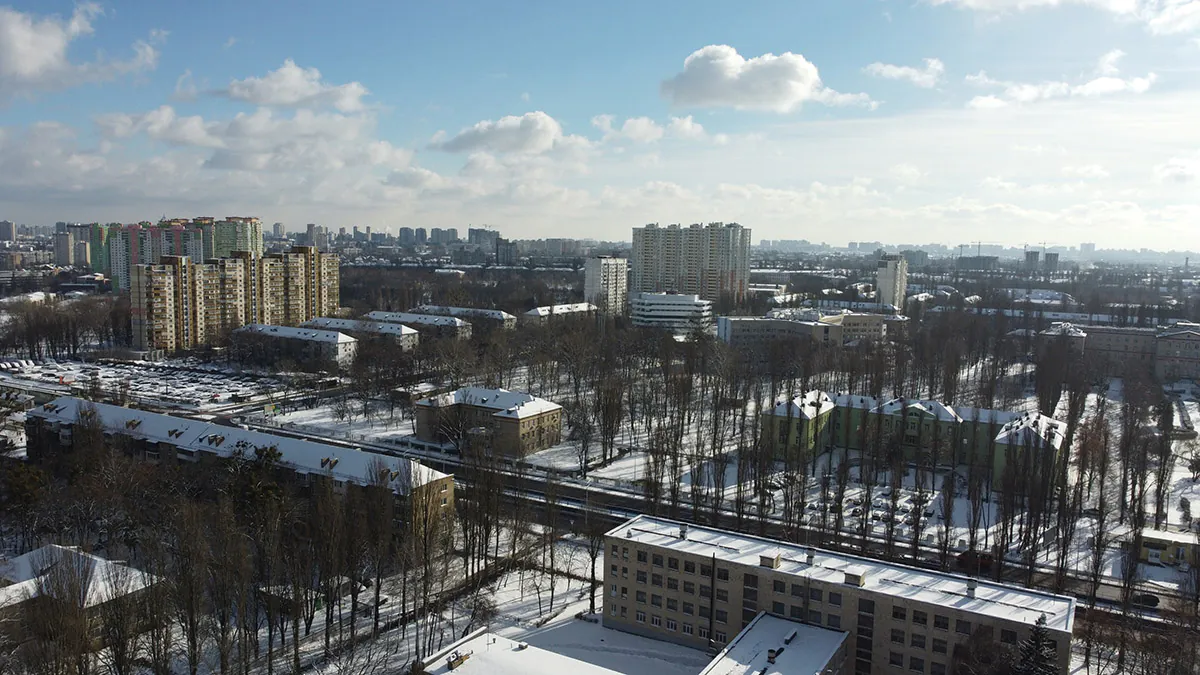
The rest of the modes remained unchanged. Circle, Spiral, Rocket, and Light-off work as they should and allow you to make funny shots in automatic mode while you are fooling around with the camera. In general, I am very pleased with the camera, and the difference between the Minis is significant. This applies to both resolution and RAW.
PHOTOS AND VIDEOS FROM DJI MINI 2 IN FULL RESOLUTION – HERE
DJI Fly app
To control the drone you can use the official DJI Fly app, which allows you to connect both the first and second Mini. Available for Android and iOS:
The interface remained the same, and after launching, I immediately received map updates and drone firmware updates. I recommend that you turn on the entire system before traveling and check for updates.
They can very easily ruin the whole experience simply because nothing will work if the drone and the remote control have different and/or outdated software versions. When I first tried to work the drone, I stood for half an hour doing nothing until I figured out the updates.
After authorization, the entire flight history of both a specific drone and a general one is pulled up. You can also go to the map and see the restrictions.
It is important to remember that laws are becoming more stringent with each year in relation to drones. In areas near airports you need to have a special permit on the official website and enter both your data and the drone there. Otherwise, the drone will refuse to even take off.
I made no screenshots of the app because I was just too carried away by how pleasant it is to use the Mini 2. But to be honest, you haven’t lost anything critical: the interface looks like a simple custom camera on Android. A minimum of functions, but everything you need is there.
Common issues
Now it’s important to talk about the cons of the Mini line. There are only a couple of them, but they are important. The first and most important issue (and plus) of the drone is its mass. Yes, it makes it possible not to register it almost anywhere and safely fly in those places where other models require permits. But because of this, strong gusts of wind make the drone less stable.

At a high altitude or somewhere in the mountains this baby will struggle climbing to the next 100 meters or fly between houses, where there is a draft. It is also affected by upwind flight. Fortunately, now, with an increase in speed, the threshold of the permissible headwind has increased from 8 m/s for the first Mini, to 10.5 for the second Mini.
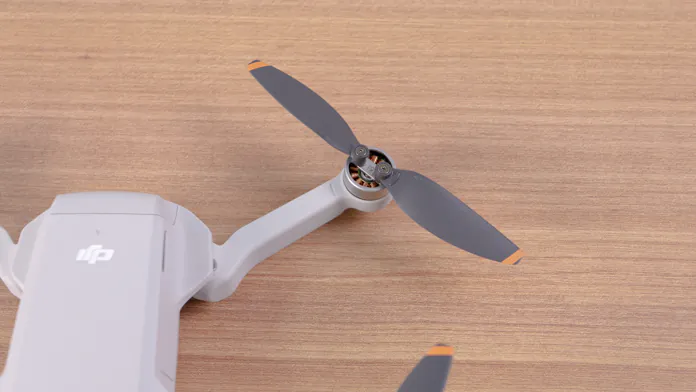
The second disadvantage of the line is the almost complete absence of sensors. Same situation with in the first version. All we have is a landing sensor. The rest is at your own risk. Fortunately, there are special protective covers for the screws, but not in the Fly More version.
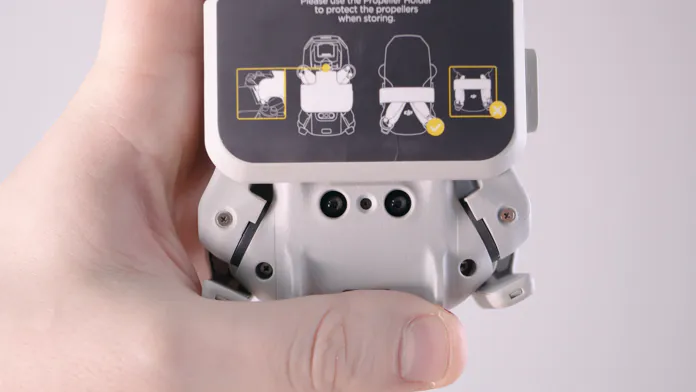
The third problem is the price. I bought the Mini Fly More Combo in the summer of 2020 for $540 in the official store. Mini 2 is even more expensive in the same configuration. It costs almost $800. Add another 200, you can buy the Air 2, which is an order of magnitude more advanced.
Verdict
The cons of the model are nothing compared to the vast improvements between these versions. While I was testing it, I almost bought myself the same model. It’s much better in comparison with my old drone that flew 80 cycles and tens of kilometers.
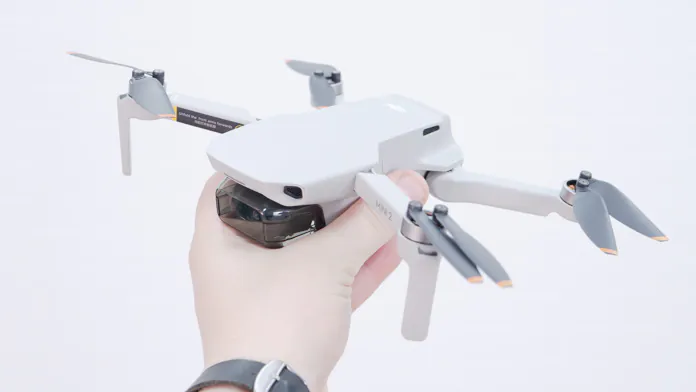
That being said, the Mini 2 has very few competitors. Even if we take other manufacturers, most often their 4K picture is an order of magnitude worse than the Mini 1’s with its 2.7K. So if you love travelling and would like to capture the best shots, the Mini 2 is definitely worth the money.

Subscribe to our accounts:

